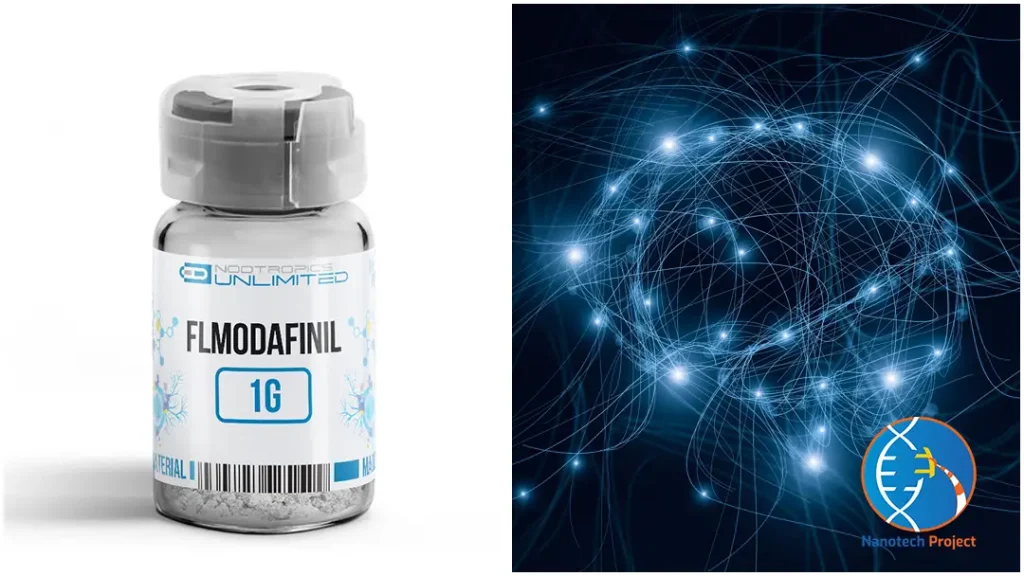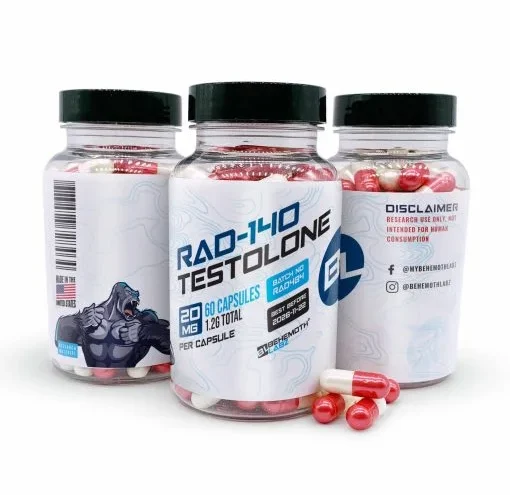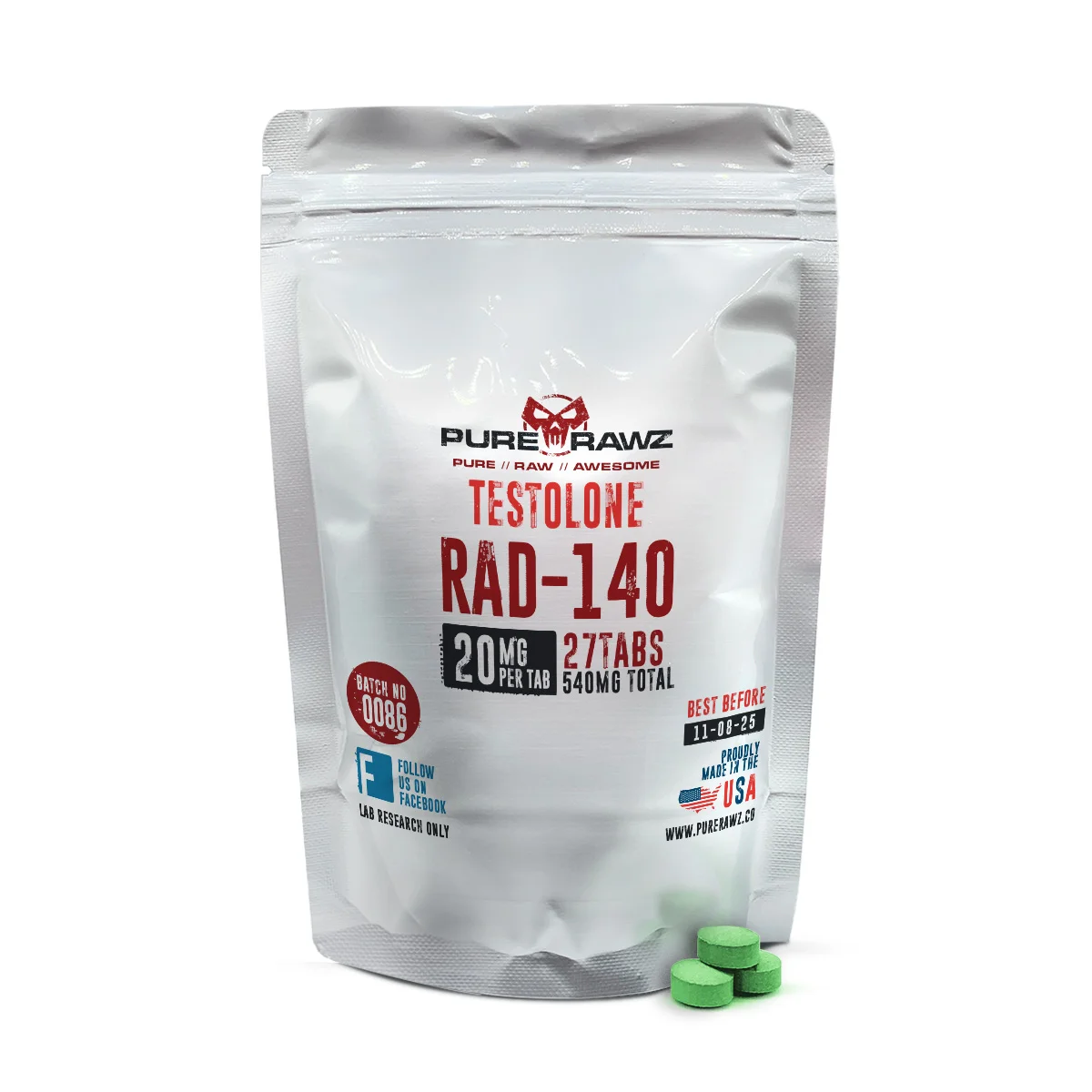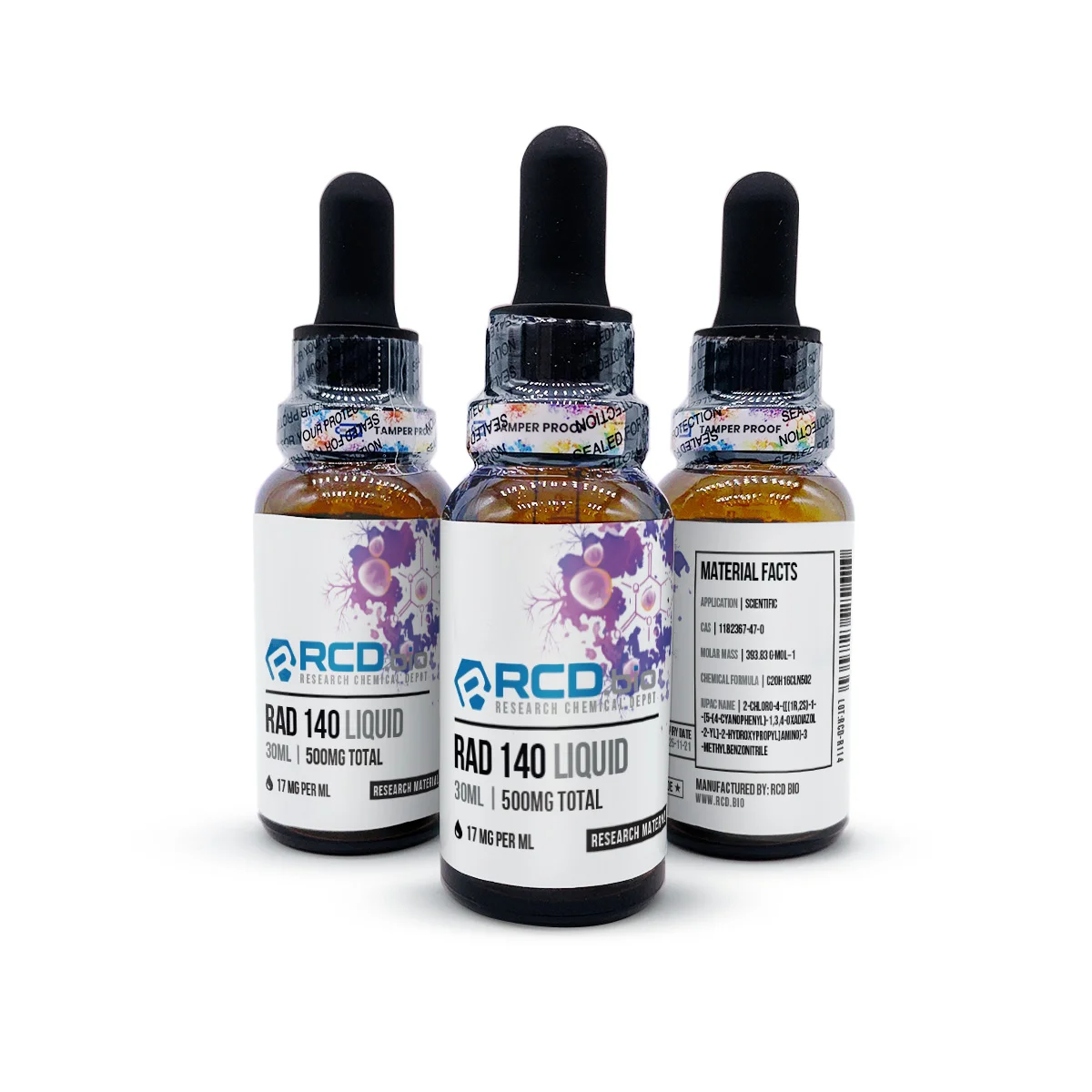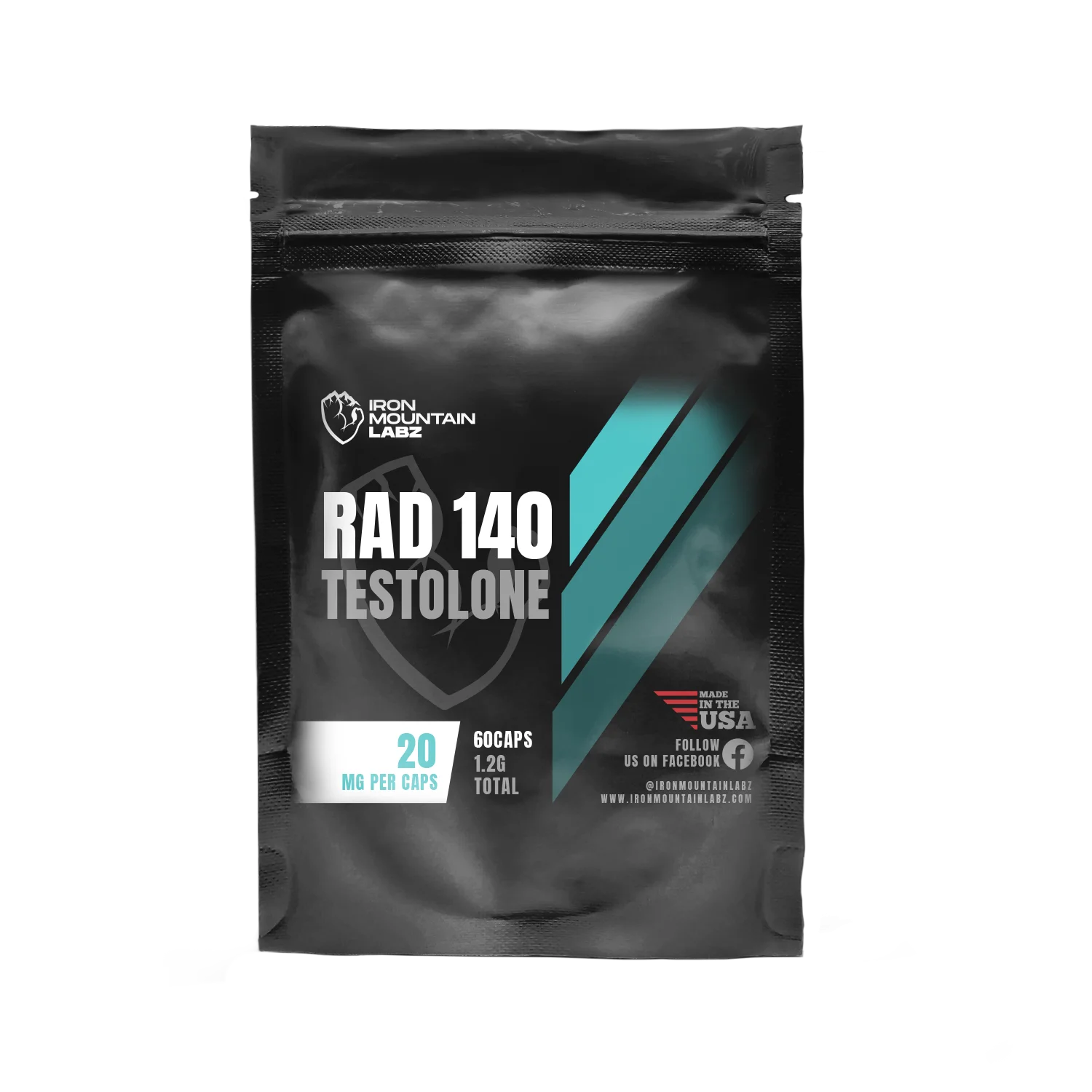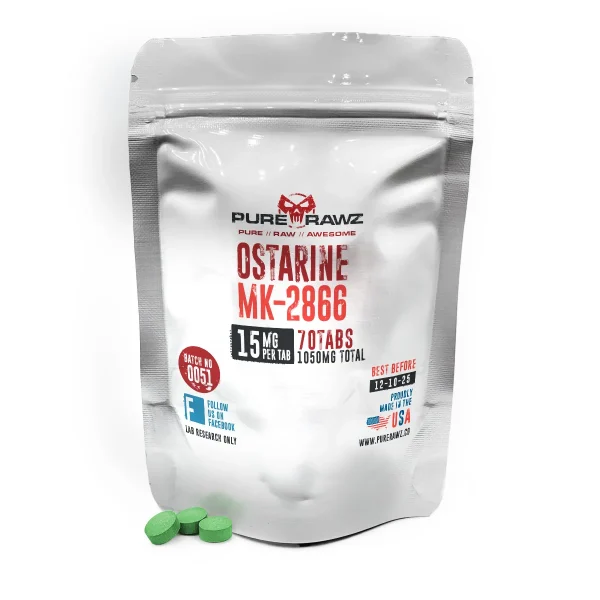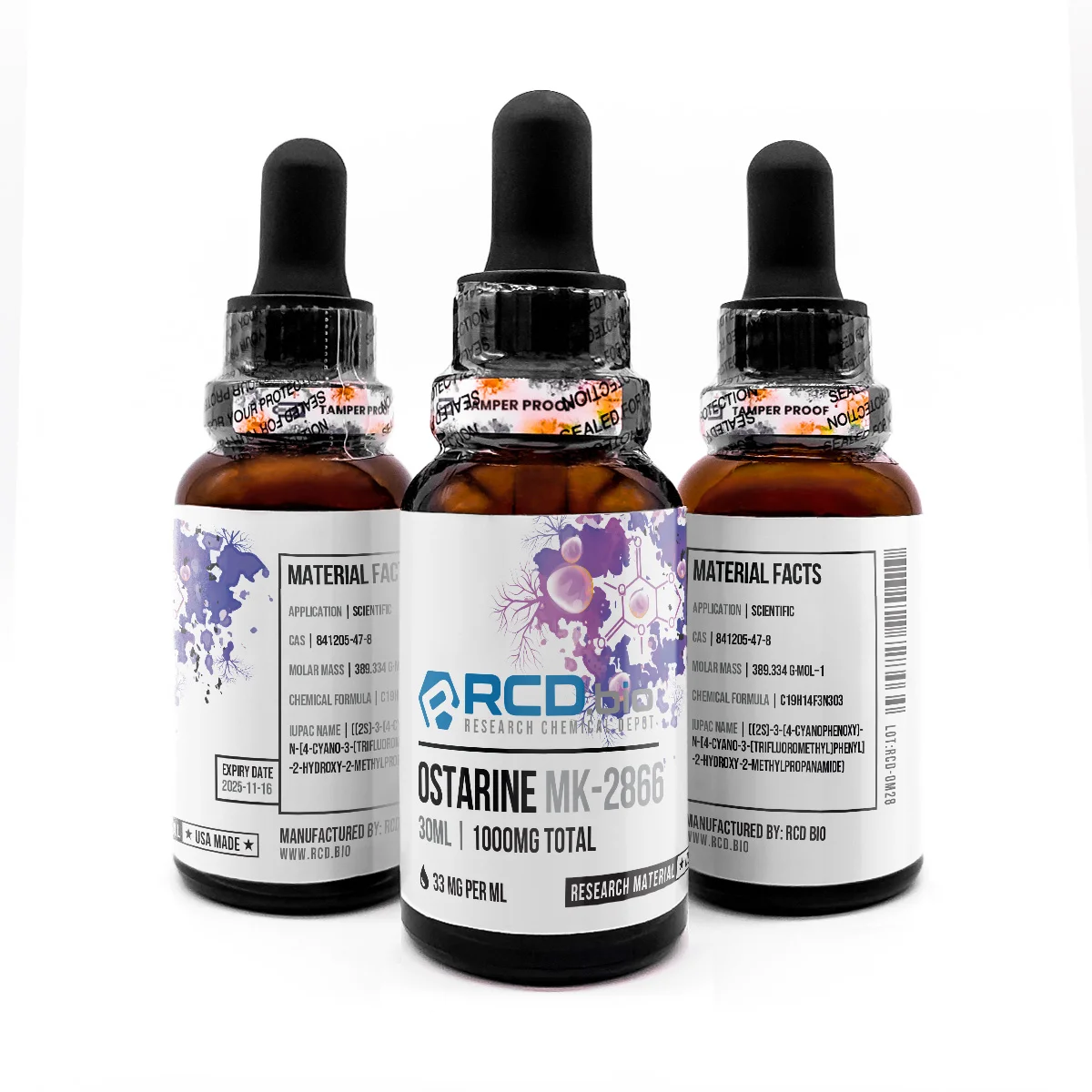Over the last couple of years, Ostarine and RAD 140 have garnered significant attention in the bodybuilding community. While both aim to improve muscle mass, reduce stored fat, and strengthen skeletal health, they differ in potency and side effects.
In this blog, we break down the key similarities and differences between Ostarine and RAD 140 to help you choose wisely. Read this blog and get an insight into Ostarine and RAD 140.
What is Ostarine?

Ostarine is a popular SARM. It is also known as MK2866 or Enobosarm. It has garnered the attention of bodybuilders, fitness enthusiasts, and health seekers. Initially, it was developed for the treatment of osteoporosis and muscle wasting. Over time, researchers have found it to be highly beneficial, and since then, it has been used to improve skeletal health and enhance lean body mass.
For these roles, Ostarine binds with androgen receptors in muscle and bone tissues and demonstrates anabolic activities. However, unlike anabolic steroids, it has less hepatotoxicity compared to anabolic steroids.
What is RAD-140?

RAD140 is a synthetic SARM. It is also known as Testolone. It binds with specific androgen receptors found in muscle and bone tissues. After binding with these androgen receptors, it mimics the effects of natural testosterone and exhibits anabolic activities in users.
While exhibiting the anabolic activities, RAD140 promotes muscle building, improves lean body mass, accelerates fat loss, and strengthens skeletal health. Apart from these benefits, it also enhances metabolic rate, helping users in effective digestion.
What are the Key Similarities Between Ostarine and RAD140?
The key similarities between Ostarine and RAD 140 are as follows:
Both are SARMs:
Both Ostarine and RAD 140 are SARMs. Due to their characteristics, such as specific binding and mimicking the effects of natural testosterone, they have been categorized as Selective Androgen Receptor Modulators (SARMs).
Similar Mechanism of Action:
They have similar mechanisms of action. It means they bind with androgen receptors, particularly in muscle and bone tissues, and demonstrate anabolic activities. They avoid binding with androgen receptors found in other body parts, making them specific in their functions.
Muscle Building Effects:
Both Ostarine and RAD140 have a similar impact on the muscle building of users. They bind to androgen receptors in muscle and bone tissues. After binding, they mimic the effects of testosterone and improve muscle building.
Fat Loss Effects:
Similar to muscle-building effects, these compounds also have similar effects on fat loss in users. They accelerate the fat loss process in two ways: first, they improve lipolysis, which is the breakdown of large fat molecules into smaller ones. Secondly, the enhanced muscle mass draws energy from the stored fat, thereby reducing the amount of fat.
Both are Liver Friendly:
Both Ostarine and RAD 140 have mild effects on the liver of users. They do not cause liver toxicity compared to other compounds. Therefore, they can be used without any fear of liver damage.
Suppress Natural Testosterone:
Ostarine and RAD 140 also suppress the natural levels of testosterone. They mimic the effects of testosterone and sometimes reduce its natural levels in the body.
Key Differences Between Ostarine and RAD140
The key differences between Ostarine and RAD 140 are as follows:
Rapid Muscle Growth vs Slow Muscle Growth:
The muscle growth caused by RAD 140 is rapid and can be observed within the first few days of use. On the other hand, the muscle growth caused by Ostarine is slow and takes a long time to be observed.
Intensity of Testosterone Suppression:
RAD140 has a strong influence on suppressing the natural levels of testosterone. On the other hand, Ostarine has a mild effect on the suppression of testosterone in users.
Difference in Severity of Side Effects:
The side effects caused by RAD140 are moderate to severe. It means they can impact other body parts as well if used without following the recommended guidelines and proper dosage. On the other hand, Ostarine has mild effects and can be easily managed during its initial phase.
Different Half-Life:
The half-life of RAD140 is 15 to 20 hours, as observed during clinical trials. On the other hand, the half-life of Ostarine is 24 hours in users.
Requirements of Post-Cycle Therapy (PCT):
Healthcare professionals strongly recommend PCT after using RAD140. While for Ostarine, PCT is still advisable, but in some cases. The side effects of Ostarine are mild, allowing users to avoid post-cycle therapy (PCT).
Which One is the Better Option?
As for the better option, it depends on your goals, objectives, financial status, and health condition. Both are used to improve muscle growth, lean body mass, accelerate fat loss, and enhance skeletal health.
- For older users and those seeking rapid muscle growth with manageable side effects, RAD 140 is strongly recommended.
- For beginners and minimal suppression of testosterone levels in the body, Ostarine is recommended.
Final Thought
Ostarine and RAD140 belong to the category of SARMs. They demonstrate similar potential benefits through a similar mechanism of action. On the other hand, they also differ from each other in their side effects and impacts on the suppression of testosterone levels. While comparing these compounds, both are good and are used for muscle growth and skeletal health.
References:
- LoRusso, Patricia, et al. “A first-in-human phase 1 study of a novel selective androgen receptor modulator (SARM), rad140, in er+/her2-metastatic breast cancer.” Clinical Breast Cancer 22.1 (2022): 67-77.
- Yu, Ziyang, et al. “Selective androgen receptor modulator RAD140 inhibits the growth of androgen/estrogen receptor–positive breast cancer models with a distinct mechanism of action.” Clinical Cancer Research 23.24 (2017): 7608-7620.
- Wagener, Felicitas, et al. “Human in vivo metabolism and elimination behavior of micro-dosed selective androgen receptor modulator RAD140 for doping control purposes.” Metabolites 12.7 (2022): 666.
- Zilbermint, Mihail F., and Adrian S. Dobs. “Nonsteroidal selective androgen receptor modulator Ostarine™ in cancer cachexia.” Future Oncology 5.8 (2009): 1211-1220.
- Hoffmann, D. B., et al. “Evaluation of ostarine as a selective androgen receptor modulator in a rat model of postmenopausal osteoporosis.” Journal of bone and mineral metabolism 37 (2019): 243-255.







